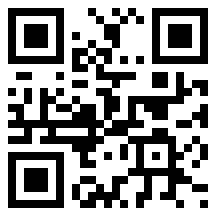QR codes are still a bit of a buzz in the real estate community. At every sales or social – tech event, there’s at least one person who has a presentation about them. And whether you like them, hate them, use them, or don’t understand them, they’re here and people are talking about them. We’ve talked about them here before, explaining how we have used them in our marketing and how we generate the qr codes, etc… But we haven’t quite covered the best practices that we have adhered to in our usage of them. Here they are…
Mobile Optimization – The question smart phone users ask subconsciously before they scan is, “Where are you taking me and will I have to squint?” If someone takes the time to scan the fuzzy little code on our flyer or postcard we better give them a legible and usable experience! What this means is that when we direct someone to a website via qr code, that webpage should be optimized for the small smartphone screen. As an example, we have created a very simple, mobile optimized page for placing customer service and title & escrow orders. Test it out by scanning the code below to the right:
Is anyone scanning them? Tracking QR usage
As with all marketing activities, we need to measure the reach of each campaign to determine what our return is. For QR codes, we track the number of scans by using the goo.gl URL shortener. This accomplishes two things for us. Firstly, because it shortens the URL, the resulting QR code is less complex, making it easier to scan from far away or when printed small. Secondly, goo.gl automatically counts the number of visits to the URL. All we have to do is log in to our Google account, go to goo.gl and it will tell us how many visits and when those visits occurred.
Where we place them
What are the best locations for qr codes? We have used them on filers, t-shirts, fortune cookies, and scan-to-win games at networking rallies. In general they should be placed in a location where users will be close enough to actually scan them. The ultimate goal is to provide an easy link for clients to watch an informative video, follow us on Twitter, like us on Facebook, place orders, or request property info.
Where we don’t place them
In general, we don’t place qr codes online or in places where it’s impractical for users to scan them. QR codes on billboards may be impractical for obvious reasons. And this may be stating the obvious but if we have a user already on our website, it doesn’t make much sense for us to ask them to scan a code (unless of course it is to illustrate a point as in this post).
Those are some of the ways you’ll see us using this technology moving forward. So if you see one, give it a scan and look for the best practices mentioned here.
If you have suggestions or feedback, please let us know by commenting below!

